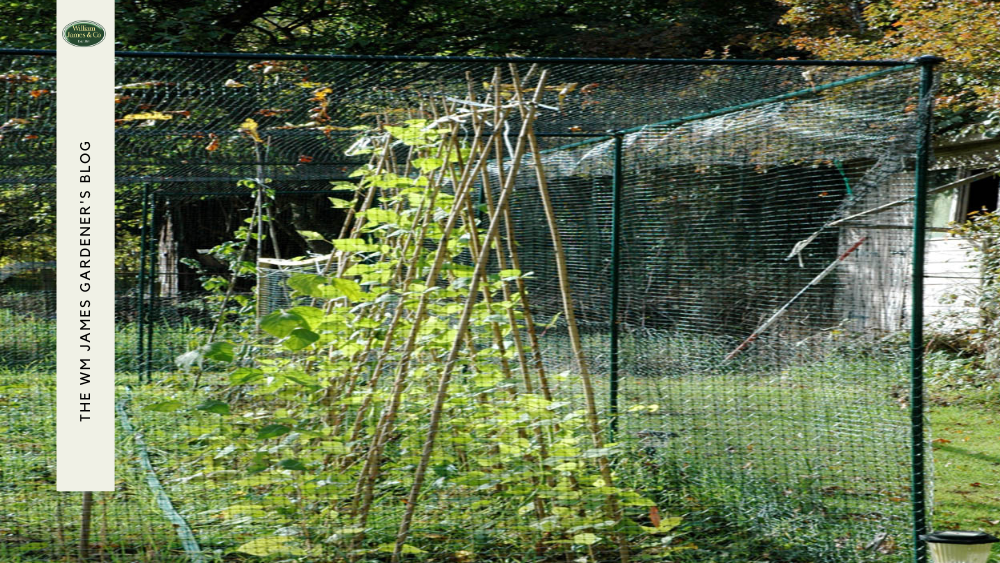We use cookies to make your experience better. To comply with the new e-Privacy directive, we need to ask for your consent to set the cookies. Learn more.
Grow your own - where to start?
- Admin
- WM James Gardening Blog
- 11 Mar 2014
-
7views
Growing your own vegetables and creating and maintaining an edible garden has never been more popular than it is now. The increasing price of healthy, organic fruit and vegetables in supermarkets compared to the relative low cost of seeds make growing an edible garden a sensible choice, as well as an enjoyable one. With celebrity chefs such as Raymond Blanc and Jamie Oliver encouraging everyone to grow their own vegetables, there are a growing number of novice gardeners who are starting to create their own garden and allotment vegetable patches.
Here at William James & Co. we have put together a guide to starting your own vegetable garden.
Location
The first thing to consider is what space you have available. With the increase in popularity of raised beds and planters, you will always be able to grow some vegetables and herbs even if you only have a patio available; a larger plot will give you more options. The best location for a productive vegetable garden is somewhere with a lot of sun and also some shelter, as well as having a source of water nearby. It is best to avoid anywhere that causes too much shade such as close to buildings or overhanging trees. Plenty of sun will help your vegetables to taste better, grow bigger and be more disease resistant. Vegetables will not grow well in windy conditions so it is advisable to use fence panels or hedges to shield your plants from spring winds which normally blow on the western side of your garden.
Ground
The key to suitable ground and soil for growing is to avoid any extremes. Standard garden soil which isn’t too thin and isn’t full of stones will suffice. Clay rich soil doesn’t drain well in the wetter months but is nutrient rich so if you are using soil like this, it is worth considering raised beds to grow in. Make your own compost using old newspapers, waste food, leaves and grass cuttings and use this on your vegetable garden to promote good growth.
Conquering
Slugs, snails and hardy weeds are the nemesis of even the most experienced growers of vegetable gardens. Before planting anything, you must clear the patch of any weeds that are apparent. Using a cheap mulch in your vegetable garden when planting will help control the growth of weeds throughout the rest of the season. To help stop slugs and snails from ruining any crops there are various products that can be used including slug mats and tape. It may also be worth creating areas between beds from stones, pebbles or similar to offer a route for the slugs and snails where they are easily spotted and removed. Although more expensive, the simple way to avoid your plants being destroyed by birds and other garden animals, is by investing in a good fruit or vegetable cage. By using different net mesh sizes you can keep birds, butterflies, rabbits and deer off your precious produce.
What to Plant
Planning the layout of your vegetable patch will get you off to a good start, but with so many different seeds out there it can be difficult to know where to start. Here's our list of vegetables which are easy and fun for first timers:
Broad beans
The main sowing period is March & April – for an earlier crop try planting in February, but make sure you cover them in cloches - alternatively plant in May to extend through to autumn
Runner beans
One of the easiest vegetables to grow, sow seeds late May to end June
French beans
Sow seeds in late May to end June – or indoor from April for an earlier crop
Chard
Brightening up any veg patch, chard is easy to grow and copes well with dry weather. Sow twice, once in April and once in July
Spinach
Grown all year round, spinach is great when other vegetables are in short supply. Sow under cloches in February; for summer sow from mid-March end May outside; and in August and September ready for winter – make sure the plants are protected in October.
Lettuce
With so many different varieties you could have salad all year round. Sowing depends completely on when you want the crop ready: Sow outdoors from late March July for summer/autumn crop, early August for an early winter crop and in a cold greenhouse or outside under cloches in September/October for a spring crop. Sow in the evening.
Potatoes
Potatoes have 3 Sowings throughout the year: Late March for picking in June/July, early to mid-April ready for July/August and mid to late April ready for August to October
Tomatoes
Tomatoes can be grown just as easy outside, in a growhouseor in a greenhouse. If you are growing them outdoors, sow late March to early April, if you start them in a heated greenhouse you can sow them mid-January (late February to mid-March if your greenhouse is unheated)
Beetroot
For best results sow little and often at fortnightly intervals during mid-April to July. Early sowings under cloches can be done in late February/early March
Pumpkins
Pumpkins are easy and fun to grow especially for children who look forward to the harvesting in time for Hallowe'en. Sow outdoors in late May/early June and cover with cloches for a couple of weeks whilst germinating.
Courgette
Courgette plants are known to spread out, so consider planting in a growbag if you’re space conscious. Sow outdoors in late May/early June and cover with cloches for a couple of weeks whilst germinating.











